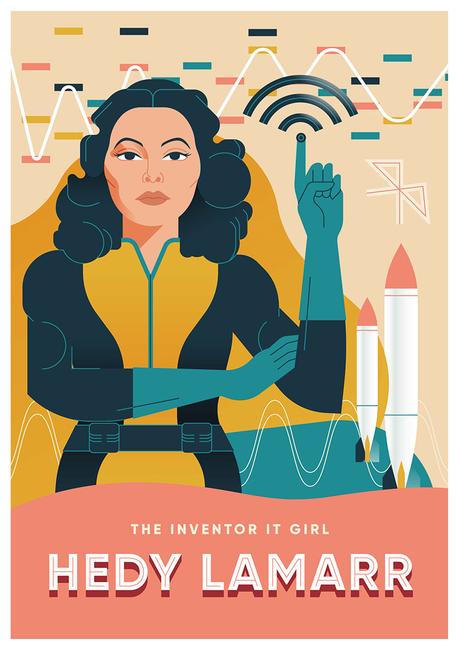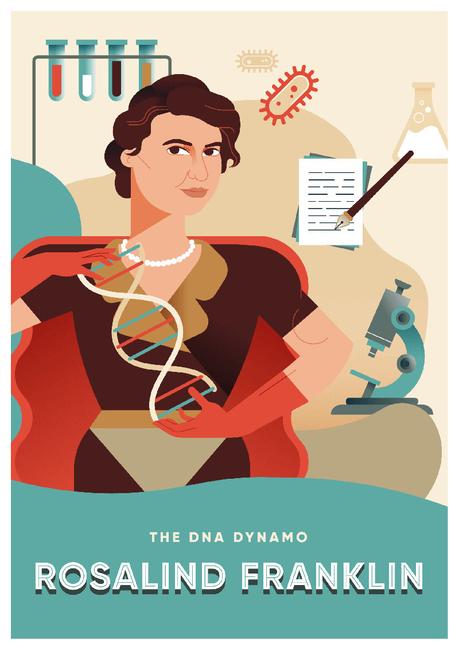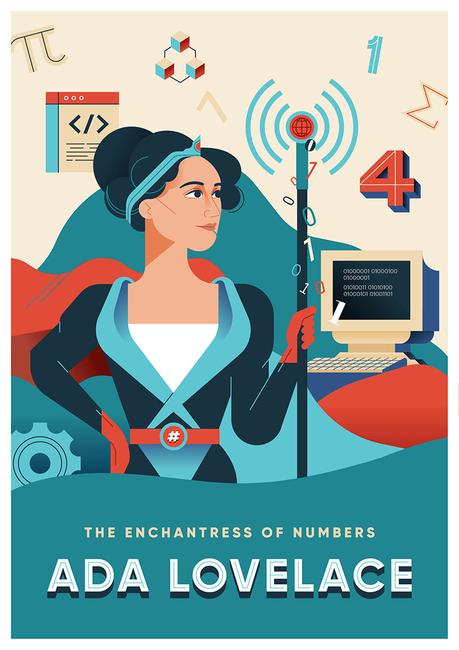In a bid to inspire more women to build careers in science, technology, engineering and mathematical (STEM) fields, Curry’s have launched a superb campaign that champions some of the greatest female minds in history.
Dubbed STEM superheroines, each of the eight women immortalised in their campaign fought for their work and ideas, in a world that was largely dominated by men. Even today, men are predominately ruling the world of technology, but by telling the stories of these wonderful women, Curry’s hope that these lists will also be full of innovative women in the coming years. Which is an incredibly welcome thought!
Here are just a few of the women featured in the campaign and the amazing discoveries they made:
Hedy Lamarr, the Hollywood bombshell who paved the way for WiFi

During her acting career, Hedy Lamarr was dubbed the “most beautiful woman in the world” by MGM, but it wasn’t her looks that made Lamarr one of the greatest pioneers in technology, it was her love for inventing.
When others might have spent their time off between movies partying and indulging in the limelight, Lamarr instead spent her spare time with her favorite hobby – inventing! These inventions included trying to make carbonated drinks from a tablet (although this was unsuccessful) and suggestions to her – then husband – Howard Hughes on how he could streamline his aeroplanes to be faster based on birds and fish she’s seen pictures of.
Her greatest achievement, though, was an idea concocted for the US Navy during World War II that ultimately paved the way for the WiFi, Bluetooth and GPS we know today. When Lamarr learned that radio-controlled torpedoes used in the war could easily be intercepted and set off course, she instantly put her mind to fixing the problem.
Her solution was to create a frequency-hopping signal that the opposition would be unable to jam or track. Working with her friend and composer George Antheil, Lamarr developed a device using a miniature player-piano that was synchronised with radio signals. The device and its designs were patented in 1942.
Despite the patent being accepted, the US Navy were reluctant to accept inventions from those outside the military and this was one that was deemed difficult to implement. Indeed, the navy instead suggested that Lamarr could do more for the war by making herself a pinup for the troops and helping to sell bonds.
Finally, in 1957, Lamaar saw her idea for frequency-hopping implemented within the military and her idea was later used as the basis for the technology used in Bluetooth and WiFI. Lamaar was never properly credited for the invention nor did she ever receive a penny for it either. For most, Lamaar is a spectacular actress, but for those in the know, she was also one of the greatest pioneers in technology.
Rosalind Franklin, the woman who discovered the chains in DNA

Dubbed the “dark lady of DNA” by her biographer Brenda Maddox, you wouldn’t be wrong in thinking that Rosalind Franklin got the raw end of the deal when it came to her crucial discoveries in DNA structure.
Born in 1920 in London, Franklin would later study physics and chemistry at the Newnham Women’s College at Cambridge University. After she graduated she completed her PhD and traveled the world, before returning to King’s College in 1946 to accept a job there. It was here she was to work with Maurice Wilkins, a relationship that was doomed from the start, as the pair had a misunderstanding. This matched with the fact that their personalities clashed meant that they refused to work together.
This suited Franklin and she was making great progress, capturing the infamous Photo 51 – an x-ray photo of DNA that showed the strand was made of two opposing chains. However, her failed lab partner, Wilkins, had gone looking for a new team to work with and found solace in Francis Crick and James Watson, who were working on building a model of DNA. Wilkins proceeded to show them some of Franklin’s unpublished work, including Photo 51. Her work, along with their data was used to build the first model of DNA and Franklin was never given credit. It was only after her death that Crick admitted her contribution had been critical to their work.
After leaving the King’s College, Franklin went on to work on the structure of the tobacco mosaic virus and was making great progress, again traveling the world to give lectures on the subject. Sadly, just as she was at the peak of her career, Franklin died from ovarian cancer at just 37 in 1958.
Crick, Watson and Wilkins all received the Nobel Prize in Physiology or Medicine in 1962 for solving the structure of DNA. If she were still alive at this point she may have been recognised for her work on DNA, but as the Nobel committee do not award posthumous prizes, her contribution remains vastly unknown.
Ada Lovelace, the first computer programmer

An astonishing 100 years before the first computer was invented, Ada Lovelace created the first published computer algorithm, effectively making her the world’s first computer programmer!
Lovelace created her algorithm while working with friend and inventor Charles Babbage. Babbage had the idea for a 15-foot calculator called the Analytical Engine, which could do the work of 100 mathematicians by itself. It could even be asked to crunch different equations. This in itself was a spectacular discovery, yet Lovelace saw more.
If the Analytical Engine and its novice decision-making abilities was able to solve equations, why couldn’t it be altered to create music or art? To showcase this, Lovelace created a rudimentary computer code that could calculate Bernoulli Numbers with her designs for the machine published in 1843. She was nicknamed the “Enchantress of Numbers” by her peers and her code and idea was recognised in later years to be an early model for a computer.

